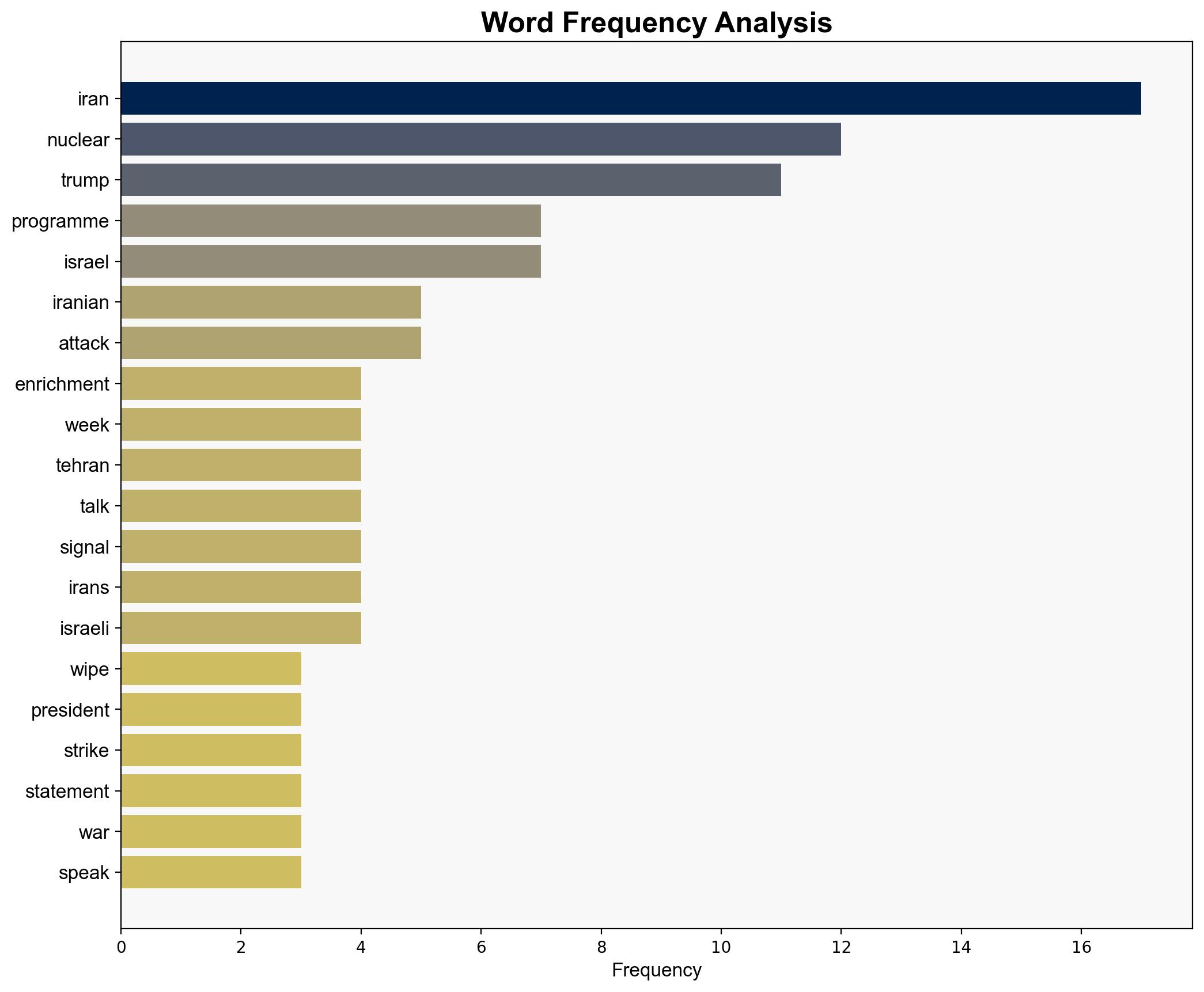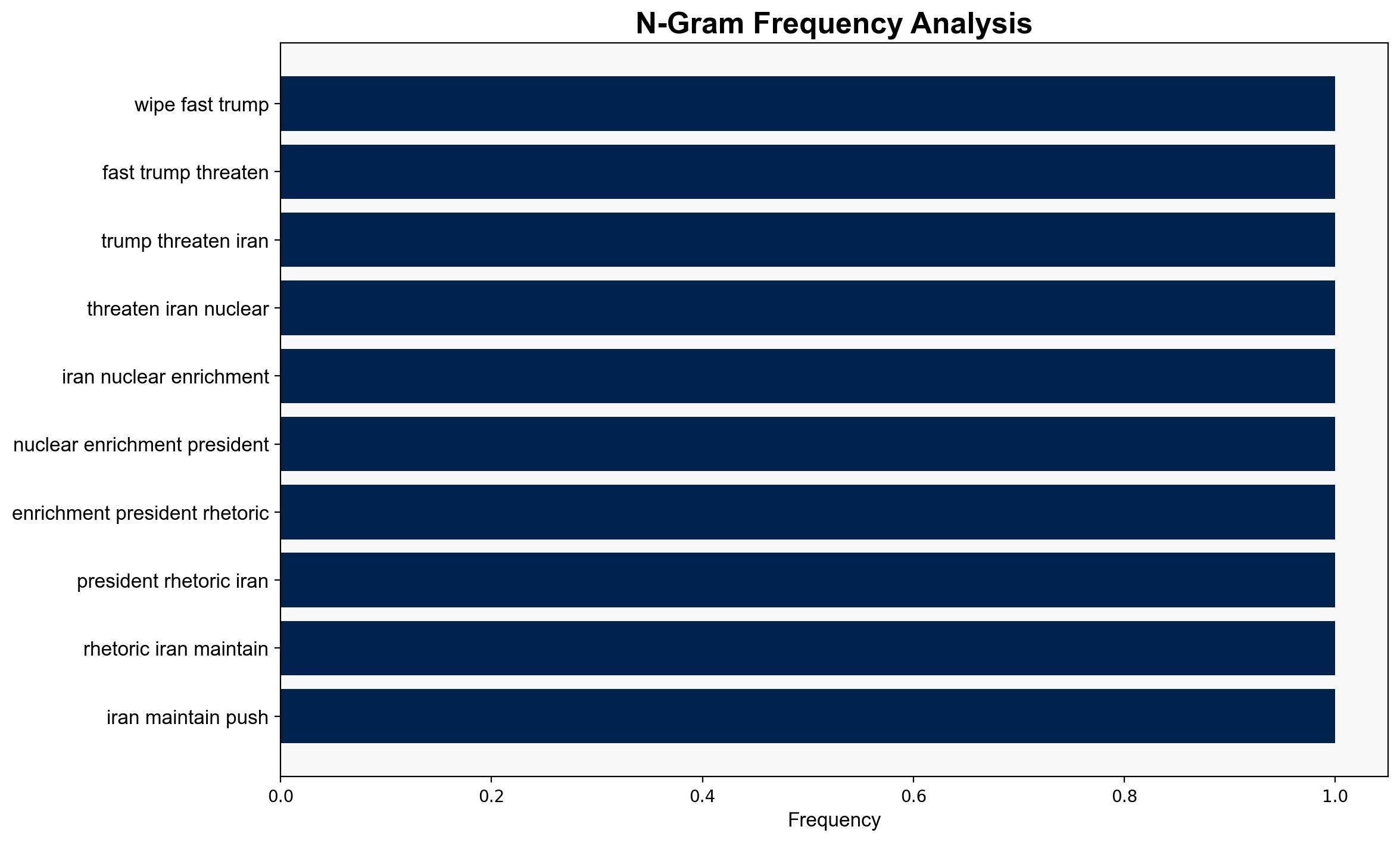Wipe it out faster Trump again threatens Iran over nuclear enrichment – Al Jazeera English
Published on: 2025-07-28
Intelligence Report: Wipe it out faster Trump again threatens Iran over nuclear enrichment – Al Jazeera English
1. BLUF (Bottom Line Up Front)
The most supported hypothesis is that the U.S. administration’s threats towards Iran are primarily a strategic posture to pressure Iran into negotiations rather than an immediate precursor to military action. Confidence level: Moderate. Recommended action: Enhance diplomatic channels and backchannel communications to de-escalate tensions while preparing contingency plans for potential military escalation.
2. Competing Hypotheses
1. **Hypothesis 1**: The U.S. threats are a strategic posture aimed at coercing Iran into negotiations over its nuclear program, leveraging military rhetoric to gain diplomatic leverage.
2. **Hypothesis 2**: The U.S. is genuinely preparing for a military strike against Iran’s nuclear facilities, using threats as a precursor to action.
Using ACH 2.0, Hypothesis 1 is better supported by the evidence. The rhetoric aligns with historical patterns of using threats to bring adversaries to the negotiating table. The lack of immediate military mobilization and the ongoing diplomatic engagements with European powers further support this hypothesis.
3. Key Assumptions and Red Flags
– **Assumptions**: It is assumed that Iran’s nuclear program is primarily for civilian purposes as claimed, and that the U.S. administration prefers diplomatic solutions over military conflict.
– **Red Flags**: The absence of clear military preparations by the U.S. could be a deception tactic. Iran’s insistence on civilian purposes for its nuclear program may be a cover for military ambitions.
– **Blind Spots**: Potential internal political pressures within the U.S. and Iran that could influence decision-making are not fully explored.
4. Implications and Strategic Risks
– **Escalation Risks**: Continued rhetoric could lead to miscalculations and unintended escalation, potentially involving regional actors like Israel.
– **Geopolitical Impact**: Strained U.S.-Iran relations could destabilize the Middle East, impacting global oil markets and regional alliances.
– **Cybersecurity Threats**: Increased tensions may lead to cyberattacks from state or non-state actors as a form of asymmetric warfare.
5. Recommendations and Outlook
- Enhance diplomatic efforts with European allies to mediate between the U.S. and Iran.
- Prepare military and cybersecurity contingencies for potential escalation.
- Scenario Projections:
- Best Case: Successful diplomatic negotiations lead to a new agreement limiting Iran’s nuclear activities.
- Worst Case: Military conflict erupts, destabilizing the region and impacting global markets.
- Most Likely: Continued diplomatic posturing with intermittent escalations but no direct military conflict.
6. Key Individuals and Entities
– Donald Trump
– Abbas Araghchi
– Masoud Pezeshkian
– Ali Khamenei
– Israel Katz
7. Thematic Tags
national security threats, cybersecurity, counter-terrorism, regional focus




